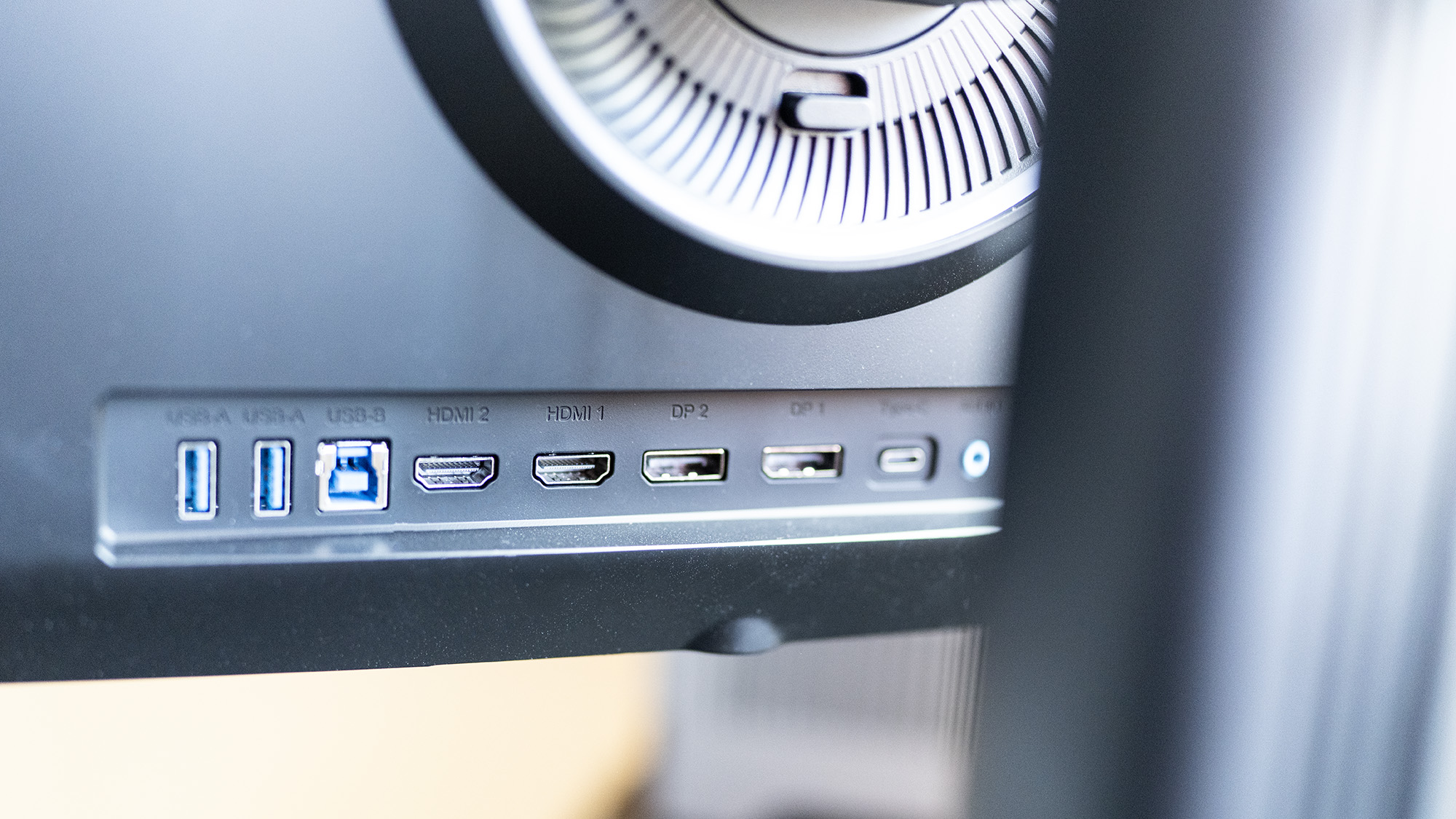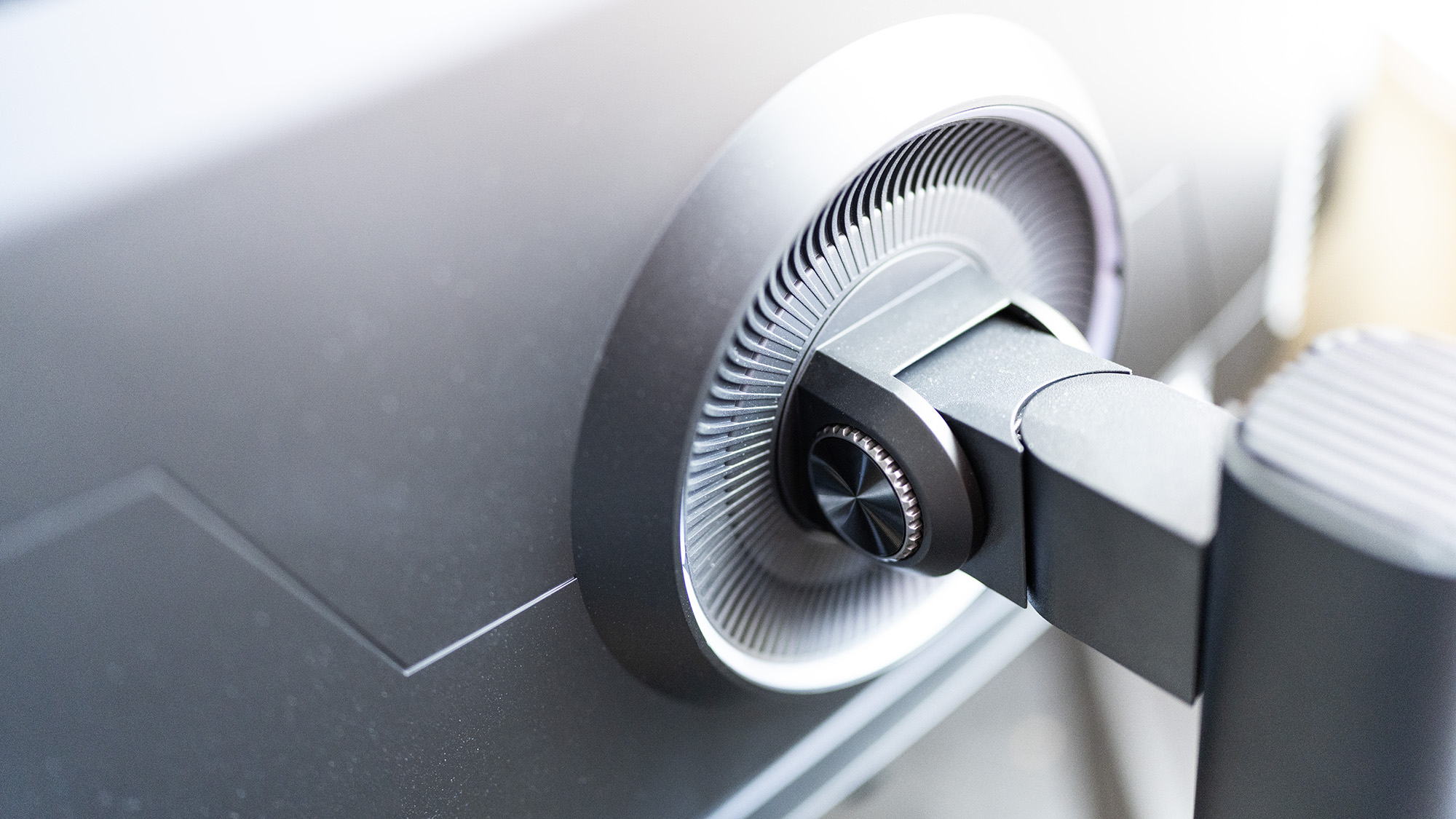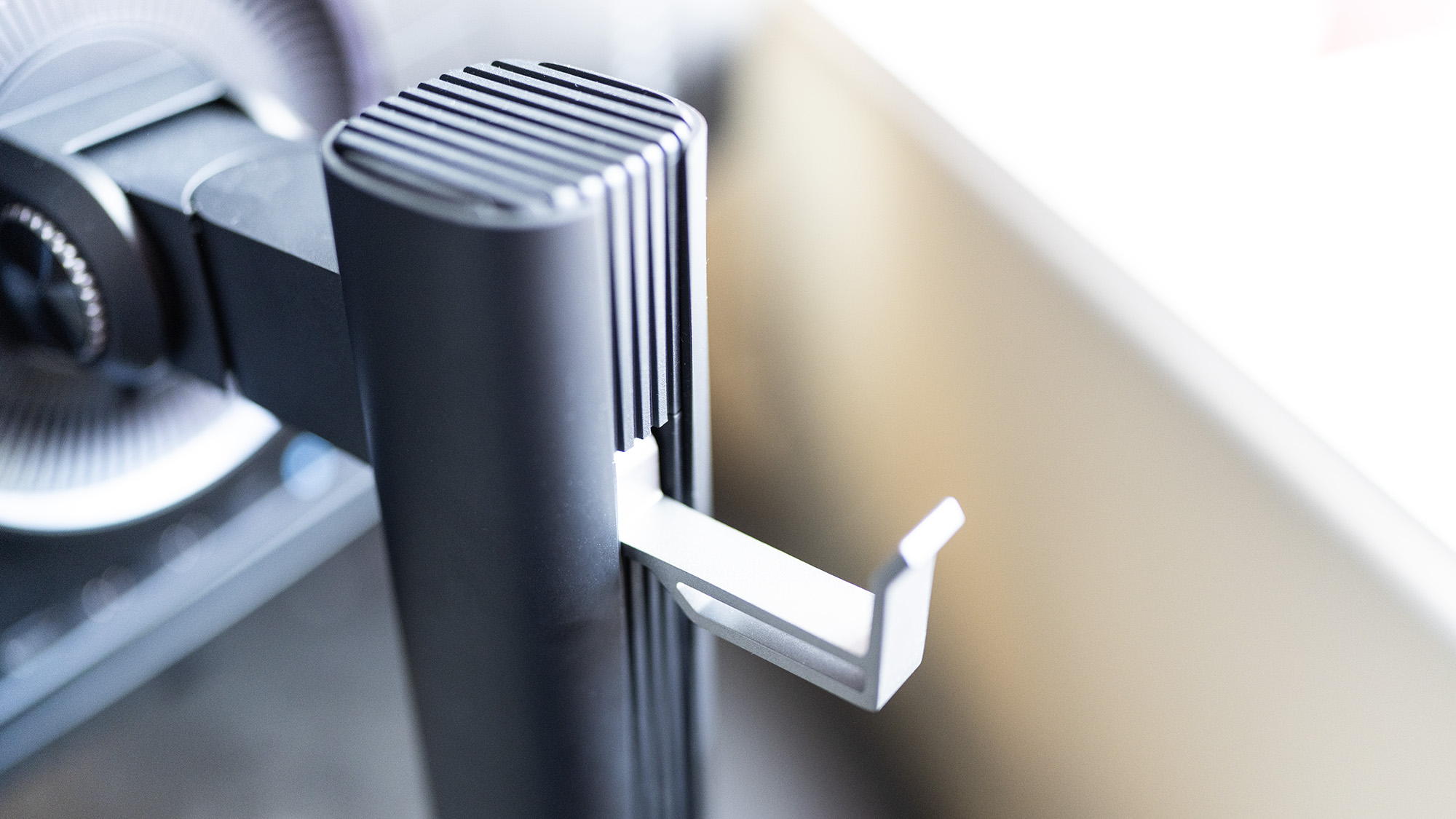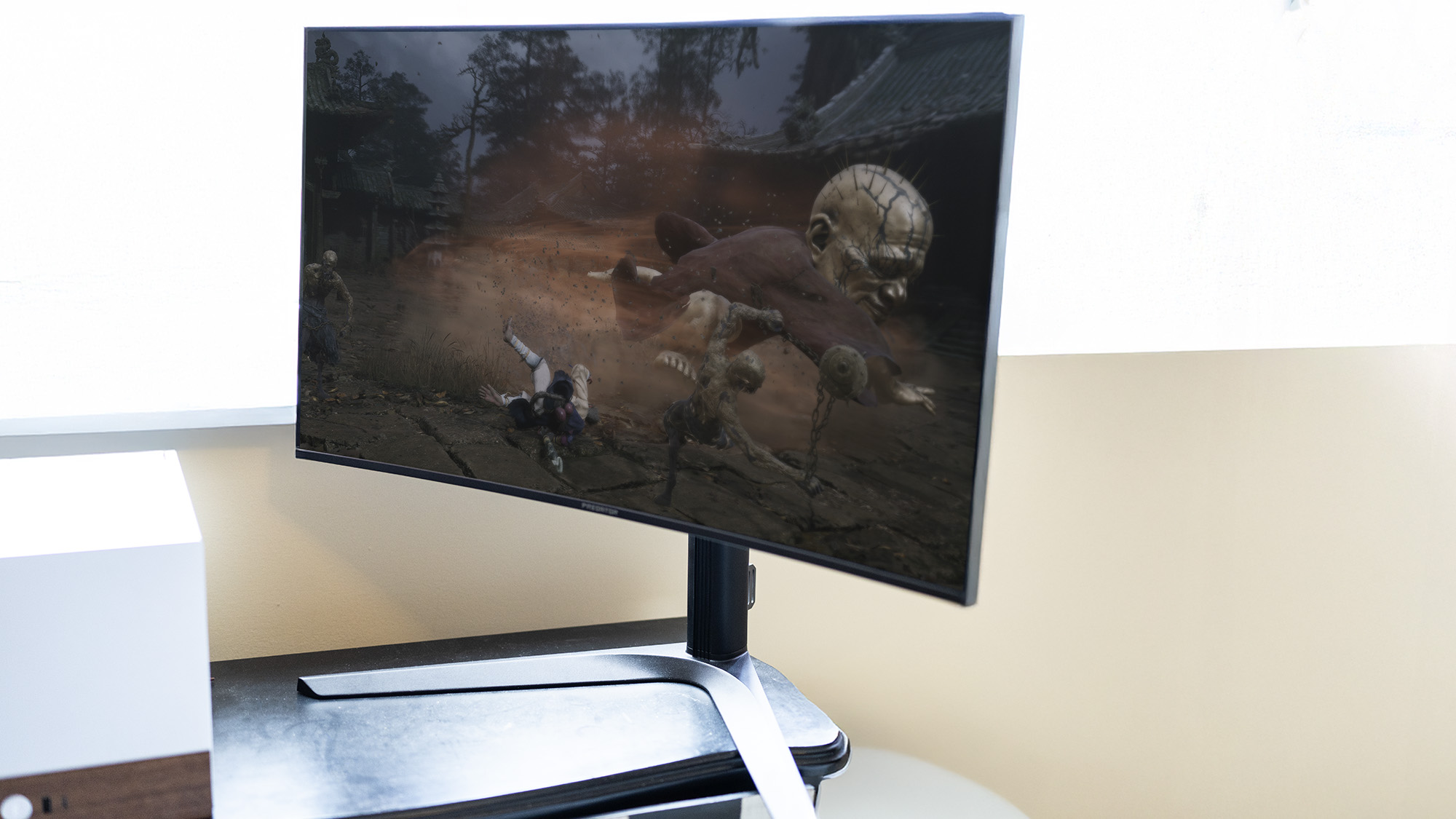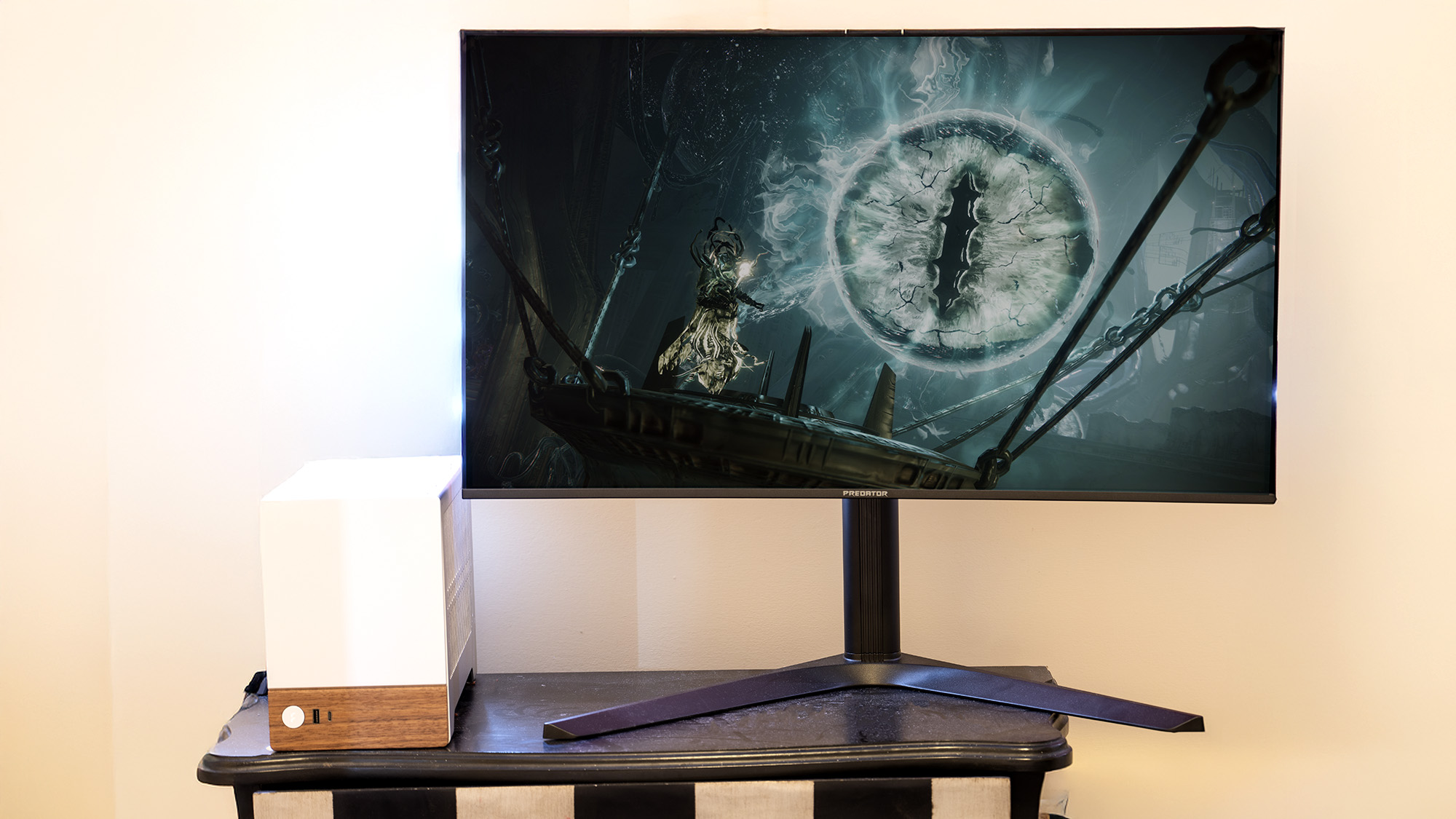
The dreaded curve comes to the 32-inch 4K OLED monitor.
We’ve seen a lot of OLED gaming monitors with impressive refresh rates recently, and some of them are pretty good. Acer’s 4K, 32-inch Predator X32X QD-OLED display marks itself out from the pack by sporting a 1700R curve, which will instantly endear it to some and cause others to come out in the kind of rash that gets you thrown out of the doctor’s waiting room.
I’m not here to convert anyone to the Church of the Holy Curve, but every time I use a curved screen I have a kind of epiphany. The cute pink bunny rabbit that lives on one of my shoulders whispers pleasantly in my ear that having the edges of the screen bend toward you is actually quite nice, given how close we tend to sit to PC monitors. It doesn’t make as much sense for a TV that’s across the room, but having a 32-inch screen on your desk that looms in your peripheral vision is actually pretty good for gaming, providing you’re sitting in the right place.
Then the squirrel in a halloween mask that lives on my other shoulder mutters hoarsely that this is all nonsense, curved screens are an abomination, and that my usual 32-inch flat monitor is perfectly good enough, thank you. Will curved monitors that aren’t ultrawides go the same way as glassed-based 3D? There certainly seem to be less of them around than there used to be.
You know what else is pretty good for gaming? 4K. And HDR. And 240Hz refresh rates. And OLED in general.
Screen size: 32-inch
Screen type: QD-OLED
Resolution: 3840 x 2160
Max refresh rate: 240Hz
Connectivity: USB-C, 2x HDMI 2.1, 2x DisplayPort 1.4, USB KVM
HDR: HDR 400
Webcam: No
Speakers: 2x 5W
Adjustments: +25º to -5º tilt; + 90° pivot; +/- 20° swivel; 150mm height
Dimensions: 818mm x 30.5mm x 579mm
Weight: 7kg (with stand)
Price: $900 /£869
There was some fun to be had setting the X32X up: out of the box, the picture was dull, and getting the colourful image quality we’ve come to expect from an OLED screen took slightly more poking around in the settings of both the monitor and Windows 11 than otherwise might have been expected. It’s entirely possible that the review unit had been in someone else’s hands before landing at the PC Gamer Testing Lab and Grooming Parlour, and that they had messed up the settings somehow, but to get a bright picture from the X32X it first needed a few tweaks.
HDR needed to be activated in both the OSD (which is responsive and easy to navigate with the central joystick) and Windows, then a further delve into the OSD to uncover a ‘Max Brightness’ mode. Once switched on this screen finally provided a decent result, and while the colourimeter reading of 230 nits perhaps looks a little low for an HDR400 screen, the higher figure often doesn’t apply to full-screen brightness, and a figure of around 250 nits for this is the same as we’ve seen in plenty of screens that share this type of Samsung panel, such as the MSI MPG 321URX.
The screen is capable of displaying 98% of the DCI-P3 colour gamut in our tests, which is pretty standard for HDR OLEDs, and it all adds up to a satisfying display once you’ve got it set up.
Then of course there’s the frame rate. Ghosting isn’t something you’d expect from a 240Hz OLED, there’s no blurriness, and the viewing angle is good. If you’ve got the kind of PC that can feed it with a high framerate, it will display it—though with the slight yellow tint that’s common in QD-OLED panels. A quick nudge of the colour temperature toward the blue can make a difference, but it’s not really worth bothering about especially as we’re all so blue-light-phobic these days.
On the outside, the X32X is extremely nicely made, as we’ve come to expect from Acer Predator equipment, though there is a large external power brick that will get stuck behind your desk if you let it. The screen’s casing is the kind of black plastic that attracts dust, thin at the edges, and it’s surprisingly light without the stand. That stand clicks into a circular socket at the back of the panel, and a single thumb-turned screw attaches it to a widely splayed two-toed foot to keep it stable. There’s a cable guide at the bottom of the stand, and a folding headphone hook at the top which you could also use for holding your keys or a spare HDMI cable.
✅ You’ve got five things to plug into a monitor and don’t like hubs: Honestly, it’s a lot of inputs, and most will gather cobwebs, but knowing they’re there will give a warm feeling.
❌ A childhood trauma involving a Bezier or parabola still haunts you: Geometry class was hard for all of us, and the 1700R curve of the X32X is about the only thing to dislike about it.
You might need that cable, because the X32X is well supplied with inputs. Curved screens may not be ideal for watching streaming video, but once you’ve got PCs attached to both DisplayPort inputs and the USB-C, you’ll need something to go in the second HDMI socket alongside a console or cable box, and a streaming stick might fill it nicely. There’s a useful USB hub for those who like to switch between PCs too, allowing you to swap a mouse dongle and maybe a flash drive between the USB-C (which can supply 65W of charge, though it’s worth noting that 90W is available elsewhere if your laptop’s really thirsty) and one of the other inputs via a USB-B port. There’s a pair of 5W speakers too, which nobody’s likely to bother with, and an audio jack on the back.
So sorry, squirrel, the bunny might have carried the argument this time. The current crop of fast 32in OLEDs are some of the best PC gaming monitors available right now, and the Acer Predator X32X uses the same tech as a lot of them, with the same positives and negatives. It’s even available at a similar price. What you’re getting here that you won’t find elsewhere is the curve and the extra video input. And whether you like the curve is a matter of taste, despite what the bunny says.

